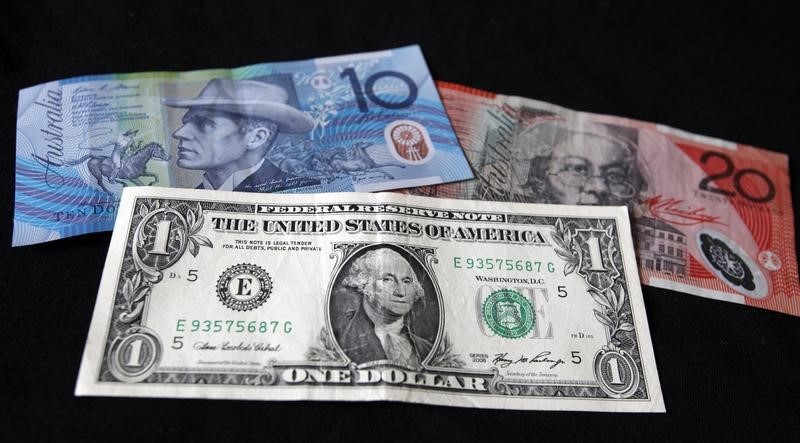Investing.com - The dollar fell against its rivals Monday as trade-sensitive currencies rallied on the back of the temporary U.S.-China trade truce, while mixed U.S. economic data also weighed.
The U.S. dollar index, which measures the greenback against a trade-weighted basket of six major currencies, fell by 0.36% to 96.90.
ISM manufacturing data for November showed an uptick to a reading of 59.3, beating expectations for 57.6. A reading above 50 in the ISM index indicates an expansion in manufacturing, which accounts for about 12% of the U.S. economy.
Construction spending unexpectedly fell 0.1%, undershooting economists' forecast for a 0.4% increase.
The duo of reports did little to help the dollar mount a recovery as traders fled the greenback in favor of risk-sensitive currencies on easing U.S.-China trade worries after both parties agreed to 90-day truce.
AUD/USD, often viewed as a barometer of broader risk sentiment as well as a proxy for China-related risks as China is the largest buyer of Australia's key exports, rose 0.73% to $0.7358.
Signs of easing tensions between China and the U.S. is "certainly a big step in the right direction," said Salman Ahmed, chief investment strategist at Lombard Odier Investment Managers.
Elsewhere the dollar was also held back by a rise in the euro amid better-than-expected eurozone manufacturing data.
The pound, meanwhile, struggled to tack on gains, with GBP/USD slipping 0.12% to $1.2734 as Brexit angst continued to weigh, with analysts cutting their estimates on a rebound in sterling in the event that Brexit is resolved.
TD Securities forecasts that sterling's rise would be limited to 5% after "the overhang of Brexit uncertainty" is removed, compared with previous estimates of "closer to double this amount," citing "Brexit fatigue" and the prospect of more uncertainty should new UK elections follow.
USD/JPY rose 0.10% to Y113.68.
USD/CAD fell 0.76% to C$1.3194 as the loonie received a boost from a rally in oil prices following the U.S.-China trade truce and reports the Canadian province of Alberta would force producers to cut output by 325,000 barrels per day in a bid to ease a crude storage build-up amid a pipeline bottleneck.
-- Reuters contributed to this report.
